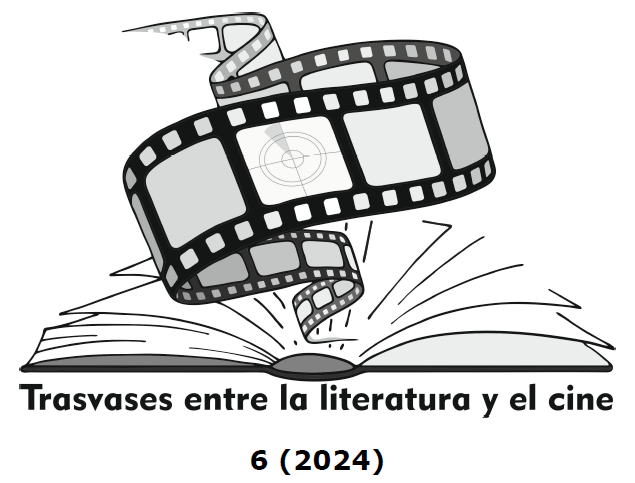Cronenberg Adapts (Us to) McLuhan: Watching "Videodrome", Reading "Understanding Media"
DOI:
https://doi.org/10.24310/tlc.6.2024.19771Keywords:
David Cronenberg, metaphor, ekphrasis, adaptation, intermediality, Marshall McLuhanAbstract
This article argues that Videodrome and the film’s novelization can both be said to adapt McLuhan’s account of television in Understanding Media. Cronenberg’s film adopts McLuhan’s style of thought by rendering figurative language as visceral cinematic image; Martin’s novelization, in turn, uses the literary device of ekphrasis to depict the protagonist’s TV-possessed inner world. Videodrome the film and Videodrome the novel express, respectively, the cinematic imaging and the synesthetic verbal description of media as «the extensions of man». The essay concludes that attending to the ways in which both the film and the novel adapt McLuhan’s writing not only attests to the intermedial nature of the interpretive act, but helps delineate the contours of the contemporary media landscape.
Downloads
Metrics
Publication Facts
Reviewer profiles N/A
Author statements
Indexed in
-
—
- Academic society
- N/A
- Publisher
- Universidad de Málaga
References
BILMES, Leonid (2023), Ekphrasis, Memory and Narrative after Proust, London, Bloomsbury Academic.
BOLTER, Jay David (1996), «Ekphrasis, Virtual Reality, and the Future of Writing», in G. Nunberg (ed.), The Future of the Book, Berkeley, University of California Press, pp. 253-273.
BORTZMEYER, Gabriel (2021), «Métastases Médiatiques: David Cronenberg lecteur de Marshall McLuhan», Débordements [Online:
https://debordements.fr/Metastases-mediatiques/. Accessed 31/1/2024].
BROWNING, Mark (2007), David Cronenberg: Author or Film-maker?, Bristol, Intellect Books.
CLÜVER, Claus (2017), «Ekphrasis and Adaptation», in T. Leitch (ed.), The Oxford Handbook of Adaptation Studies, Oxford, Oxford University Press, pp. 459-477.
DEBORD, Guy (2005), Society of the Spectacle, trans. by K. Knabb, London, Aldgate Press.
GENETTE, Gérard (1997), Palimpsests. Literature in the Second Degree, trans. by C. Newman and C. Doubinsky, Lincoln, University of Nebraska Press.
GONZÁLES-FIERRO SANTOS, José Manuel (1999), David Cronenberg. La estética de la carne, Madrid, Nuer Ediciones.
GOROSTIZA, Jorge and Ana PÉREZ (2003), David Cronenberg, Madrid, Catédra.
GRÜNBERG, Serge (2006), David Cronenberg: Interviews with Serge Grünberg, London, Plexus.
LEITCH, Thomas (2012), «Adaptation and Intertextuality, or, What isn’t an Adaptation, and What Does it Matter?», in D. Cartmell (ed.), A Companion to Literature, Film, and Adaptation, Chichester, Wiley-Blackwell, pp. 87-105.
LOUVEL, Liliane (2018), «Types of Ekphrasis: An Attempt at Classification», Poetics Today, 39/2, pp. 245-263.
LUCAS, Tim (2010), «Medium Cruel: Reflections on Videodrome», Criterion [Online: https://www.criterion.com/current/posts/676-medium-cruel-reflections-on-videodrome. Accessed: 8/2/2024].
LUCAS, Tim (2008), Videodrome: Studies in the Horror Film, Lakewood, Centipede Press.
LUCAS, Tim (1984), «Videodrome: Filming One of the Genre’s Most Original and Cerebral Stories in Years», Cinefantastique 14/2, pp. 32-49.
MARTIN, Jack (1983), Videodrome, New York, Zebra Books.
MCLUHAN, Marshall and Quentin FIORE (2008), The Medium is the Massage, London, Penguin Books.
MCLUHAN, Marshall (2009), «The Playboy Interview», Playboy Magazine 03.1969 [Online: https://nextnature.net/story/2009/the-playboy-interview-marshall-mcluhan. Accessed: 20/3/2024].
MCLUHAN, Marshall (2001), Understanding Media: The Extensions of Man, Abingdon, Routledge.
RODLEY, Chris (1992), Cronenberg on Cronenberg, Toronto, Alfred A. Knopf Canada.
PEARSON, Brook W.R. (2012), «Re(ct)ifying Empty Speech: Cronenberg and the Problem of the First Person», in Simon Riches (ed.), The Philosophy of David Cronenberg, Kentucky, The University Press of Kentucky, pp. 155-175.
RIPATRAZONE, Nick (2017), «The Video Word Made Flesh: Videodrome and Marshall McLuhan», The Millions [Online: https://themillions.com/2017/04/the-video-word-made-flesh-videodrome-and-marshall-mcluhan.html. Accessed: 16/2/2024].
RUBERG, Sarah and Jacob WARD (2023), «From brain waves, this AI can sketch what you’re picturing», NBC News [Online: https://www.nbcnews.com/tech/tech-news/brain-waves-ai-can-sketch-picturing-rcna76096. Accessed: 20/3/2024].
RUSSO, Eduardo (2017), «David Cronenberg y el cuerpo: medio y dispositivo en Videodrome y eXistenZ», diCom [Online: https://maestriadicom.org/articulos/david-cronenberg-y-el-cuerpo-medio-y-dispositivo-en-videodrome-y-existenz/. Accessed: 15/2/2024].
SANDERS, Julie (2016), Adaptation and Appropriation, Abingdon, Routledge.
SHAVIRO, Steven (2006), The Cinematic Body, Minneapolis, University of Minnesota Press.
STAM, Robert (2000), «Beyond Fidelity: The Dialogics of Adaptation», in James Naremore (ed.), Film Adaptation, New Jersey, Rutgers University Press, pp. 54-76.
WEBB, Ruth (2016), Ekphrasis, Imagination and Persuasion in Ancient Rhetorical Theory and Practice, Abingdon, Routledge.
Downloads
Published
How to Cite
License
Copyright (c) 2024 Leonid Bilmes

This work is licensed under a Creative Commons Attribution-NonCommercial-ShareAlike 4.0 International License.
All authors published in this journal accept the following copyright terms:
a. Authors retain their authors´ rights (copyright) and grant First Publication Rights to the journal, which whill be published under a the Creative Commons Attribution-NonCommercial-ShareAlike 4.0 International (CC BY-NC-SA 4.0) license. All about this license is available in the following link: <http://creativecommons.org/licenses/by-nc-sa/4.0>
b. Authors may separately establish additional agreements for the non-exclusive distribution of the version of the work published in the journal (e.g. including it in an institutional repository, or publishing it in a book) with an acknowledgement of its initial publication in this journal.
c. Authors are allowed and encouraged to disseminate their work electronically (e.g. in institutional repositories or on their own website) as this can lead to productive exchanges, as well as earlier and more extensive citation of published work.
The author is responsible for obtaining permission from the copyright holder when using copyrighted materials.
This electronic journal is published by University of Málaga (UmaEditorial), thus it is necessary to cite the origin of any partial or total reproduction.








22.png)










